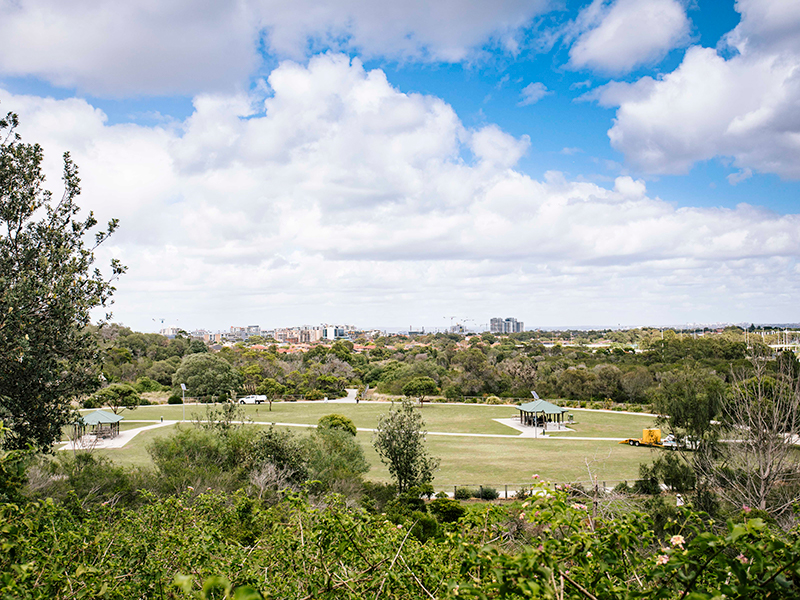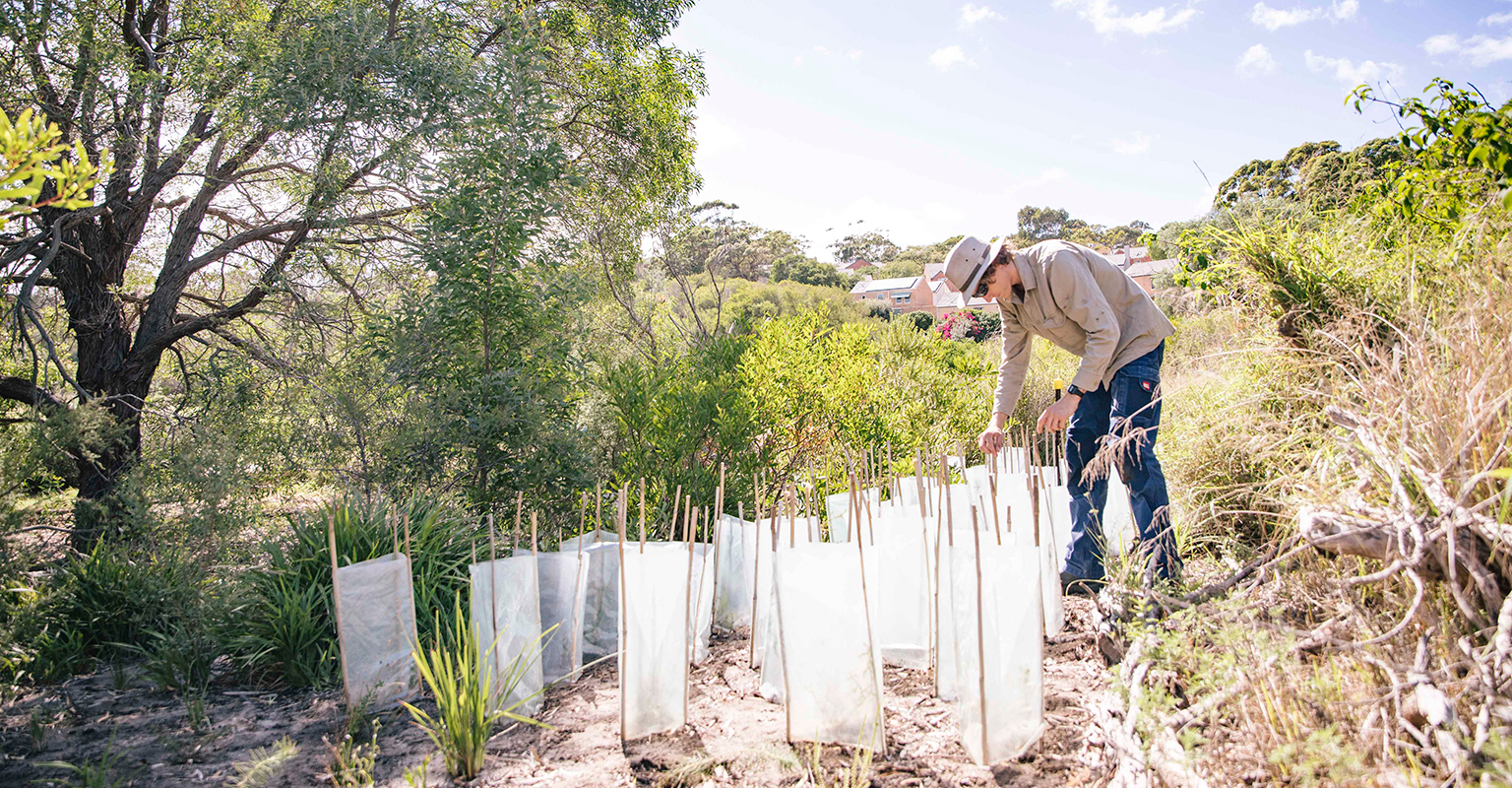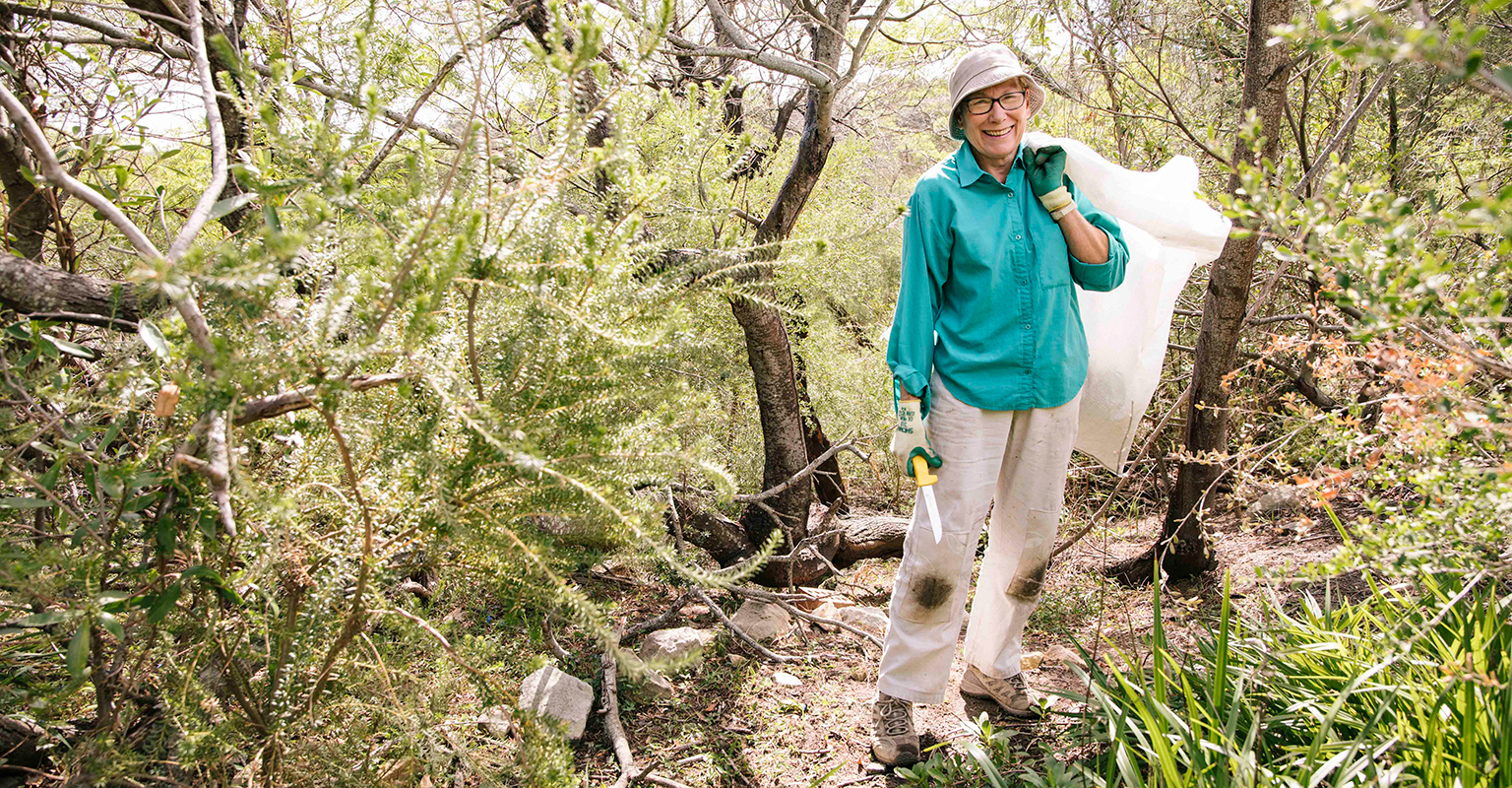Protecting Randwick Environment Park
- Published Date
- 29/01/2020
- News Topic
- Sustainability & Environment

With so many harrowing photos coming out of bushfire-affected areas, one can feel very lucky to take a walk through the Randwick Environment Park.
The 13.1-hectare site consists of parkland, bushland, an ephemeral wetland and is home to more than 90 species of native and endangered plants. There are also barbecues, picnic areas and lookouts for visitors to enjoy. As Council’s sustainability manager says, “It’s the jewel in Randwick City’s crown”.
However, maintaining the park is no easy feat. Dedicated volunteers work alongside our Bushcare team to ensure the preservation of the bushland. Bush regeneration contractors carry out works on a weekly basis whilst Bushcare volunteers visit the site every fortnight.

But what is bush regeneration you ask?
Bush regeneration is the rehabilitation of bushland from threats such as weeds, erosion, pest animals,
nutrient overloading and clearing. These threats and many others are mitigated by strategic land management practices, employed to restore ecosystem functions for native flora and fauna.
Bush regeneration is the preferred on-site land management practice due to the fact that it harnesses and promotes the natural regeneration processes that are built into native ecosystems, it has a low impact and has consistently proven to be the most effective and economical way to expand patches of native vegetation, whilst improving their condition.

What challenges does the Bushcare team face?
| Challenge | What Council is doing |
|---|---|
Weed invasion |
|
|
|
|
|
What can you do to help?
Our Bushcare groups would love to have you join them!
To volunteer just attend one of our regular Bushcare groups and complete an onsite induction with our Bushland Officer. No experience is needed as we have activities and sites to suit all levels of participation. The Bushcare calendar lists the dates of all our groups for the year in one easy place.
